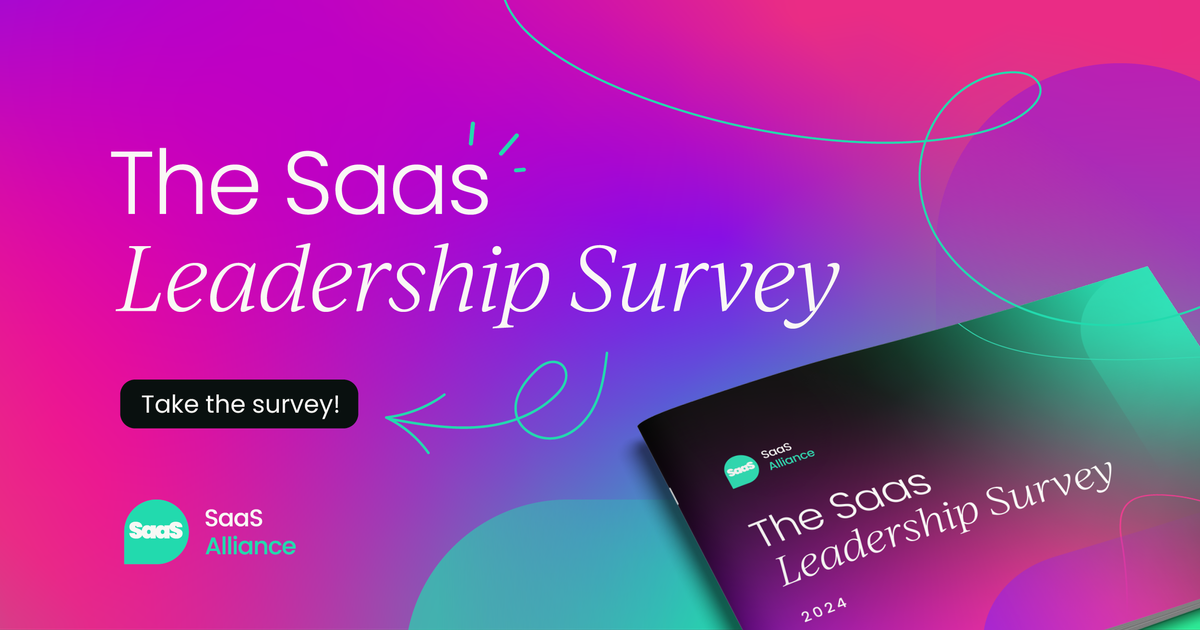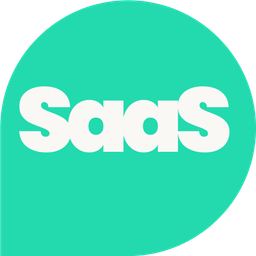In AIAI’s Generative AI 2024 report, 100% of non-AI users said they’d be willing to use AI tools in the future.
That’s right. 100%.
AI is here to stay, and is often touted as a no-brainer investment for businesses and end users alike. From the way many speak, SaaS and AI are a match made in heaven.
But how true is this? Let’s find out.
We’ll examine:
- How you can use AI in SaaS (6 eyebrow-raising applications)
- 8 breakthrough benefits of AI integration
- 8 scary risks you absolutely must know before investing in AI in SaaS
How to use AI in SaaS (6 eyebrow-raising applications)
- 1) Marketing
- 2) Project management
- 3) More effective data analysis (via personalization)
- 4) Product development
- 5) CRM (customer relationship management)
- 6) Employee training
1) Marketing
AI can help with your marketing efforts.
No doubt about it.
How you deploy it is up to you, but there are many possibilities.
AI’s predictive analytics capabilities, for example?
These can help you determine what content will be most effective for a given customer at each point along their buyer journey. In turn, this tells you where to focus your content marketing efforts.
2) Project management
You must have seen them.
Ads for Motion AI.
“I used to struggle with managing my task list and meetings. Now Motion AI does it for me.” 😌
Task lists, calendars, and project management are areas AI seems to be proficient in. At least, if the ad spend behind Motion AI’s marketing campaigns is anything to go by.
3) More effective data analysis (via personalization)
Different SaaS startups have different strategies.
Some go all-in on product, investing heavily in their dev team.
Others go all-in on customer success, looking to put the customer first and make their overall experience the best it can be.
To gain a competitive advantage, you have to be at least a little better than your competitors in at least one area. And for startups with limited resources, this often means dragging the spider diagram hard in one direction.
So, if you don’t have any data analysts, and can’t afford them, but could benefit from number crunching, what do you do?
One answer that wasn’t possible a couple of years ago: Use AI.
4) Product development
AI can help with product development, too.
Set it to work on large datasets of customer feedback to prioritize feature requests, bug fixes, and big updates. This way, you ensure your product roadmap is cost-efficient, and effective at keeping you ahead of the competition.
Or, use AI to examine the very processes you use to develop your products. It’ll be able to point out inefficiencies, propose improvements, and even drive down production costs in the process.
5) CRM (customer relationship management)
Got a lot of customers?
Struggle to keep track?
An AI integration with your CRM could be the answer.
Give AI access to your CRM data and you’ll be able to:
- Perform sentiment analysis to figure out which customers are most at risk of churning.
- Choose content that’s most likely to push a prospect to the next stage of the buyer journey.
- Apply predictive analytics to all your customer behavior to more accurately project future behavior.
6) Employee training
With a large enough pool of employees, you can use AI to assess what training different cohorts need based on their performance and skills gaps.
You might be thinking, “I could do that myself!”
Sure you could. But it’d take time. Time and attention to detail that you could be spending thinking strategically about growing the business.
Want to hear the best bit?
AI can even elevate the learning experience itself for your staff. It can personalize which modules it delivers and when, ensuring individuals are only shown the material most relevant to the pain points they’re experiencing right now.

8 Breakthrough benefits of AI integration in SaaS tools
So much for some of the specific applications of AI in SaaS and business, but what about the benefits of using AI over any other method of getting the job done?
Here are eight of AI’s biggest benefits.
- 1) Personalization
- 2) Automation
- 3) Predictive analytics
- 4) Customer service and engagement
- 5) Innovation
- 6) Scalability
- 7) Cost efficiency
- 8) Impact on productivity for end users
1) Personalization
Want to win customers from more than one market segment?
You’ll need to personalize your approach.
Personalizing messaging based on:
- The stage of the customer journey a buyer is at.
- The market segment they belong to.
- The most relevant pain points and emotional benefits for them…
…Maximizes the effectiveness of your marketing efforts.
And AI can help you.
AI integrated into SaaS tools can:
- Deliver your messaging, and tweak it over time based on results.
- Do the market segmentation for you.
- Deliver personalized content recommendations to website visitors, based on what they’ve read before.
Personalization is effective at every stage of the customer journey. That includes post-purchase.
So, you can personalize messaging aimed at increasing retention and reducing churn.
You can even personalize your B2B marketing efforts aimed at upselling existing customers to higher-paid plans, or to include other products.
And while personalization is possible as a manual task, having AI on your side makes it far more scalable.
2) Automation
Manual lawnmower…
More or less work than a gas one?

Way more labor-intensive, right?
Manual work takes longer. But the end result isn’t necessarily any better.
AI tools make automation possible at scale, cutting out labor-intensive manual work.
For instance, consider this workflow for onboarding new customers:
- Rely on yourself to notice when a new customer signs up.
- Write a personalized welcome message to them.
- Send it to them on your platform.
- Experiment over time with various messages based on open rates, response sentiment, and other metrics.
How does that sound?
‘Long and hard’ is the right answer.
Consider this instead:
- An AI automation notices when a new customer is added to your database upon sign-up.
- It automatically pulls data about them. Then decides what messaging is most appropriate, based on what market segment they belong to, and what product they signed up for.
- It then messages them. Automatically. It delivers either a DM, an email, or an SMS based on the best historical open rates for this segment.
- The AI then logs data associated with the customer’s response, and whether or not they opened the message. It uses this data to inform future decisions.
You didn’t have to raise a finger to get any of this done.
That’s the power of AI automation.

3) Predictive analytics
Predictive analytics use past data to make predictions about the future.
Here’s just one instance of how predictive analytics can be useful:
You can learn when customers are most likely to churn.
It’s common marketing knowledge that it’s less expensive to get a customer to renew than it is to acquire a new customer.
So churn and retention rates are incredibly important.
A CRM-integrated AI tool could analyze the factors that most often precede churn, and warn you of at-risk customers.
Even better, a sophisticated enough AI tool could take actions to prevent that churn. For example, by sending automatic, self-improving messaging to those customers to re-engage them.
Other examples of how predictive analytics can be useful:
- Predict which customer segments are most likely to convert.
- Predict which salespeople are most likely to fall short of target for the quarter based on current pipelines.
- Predict which marketing materials will be most effective for moving a customer down the funnel.

4) Customer service and engagement
Generative AI is still absolutely everywhere.
You’re probably sick of hearing about it.
But we can’t talk about chatbots and not mention generative AI.
If you’re still wondering how generative AI can help in SaaS, just know improved chatbots are a huge part of it.
First, AI tools in the background can perform sentiment analysis across multiple customer communication channels. That includes chatbot messaging, email, and telephone records.
This is one of the best ways to use AI in customer success. It’s huge.
This sentiment analysis can help inform everything we’ve spoken about so far:
- Which customers are most at-risk of churning.
- Which prospects are most likely to convert.
- Which marketing materials are most likely to have a big impact.
But AI chatbot integrations can help with simpler things, too.
They can handle customer queries quickly and accurately.
They can engage with prospects to point them towards information they’ll find useful.
And, most importantly, they can get better at this over time as their machine learning capabilities get to work on understanding the content on your website and the types of queries your customers ask.
5) Innovation
The AI boom has created many new tools.
And some of them are more creative than others.
Listen to what Juliette Denny, Managing Director at Growth Engineering, has to say about Domino’s Pizza’s use of artificial intelligence to push boundaries:
“They used artificial intelligence to develop a model which allowed them to predict when your pizza was going to get to you. They went from an accuracy of 75% to an accuracy of 95%. This also worked out well for Domino’s because it meant they weren’t getting as many calls.”
6) Scalability
Scalability.
The goal of just about every business.
Historically, leaders have scaled their businesses by investing in person-power, training, and automating where possible.
But scalability is really just about having the systems in place to grow. That means bringing in more leads, converting more leads, and successfully serving your products and services to your new customers.
Fulfillment is often the bottleneck, but hiring and training new staff is expensive and risky.
In all the ways we’ve mentioned so far, AI can help here. When customers have questions, AI can step in. When customers need support, AI can step in. When you need to improve conversion rates, you guessed it, AI can step in. And when it comes to improving retention, AI can step in here, too.
All these things help your business to scale, and the AI tools integrated into the SaaS products you already use can do these tasks for you.

7) Cost efficiency
The hard truth is, a business can invest in an annual subscription to an integrated AI tool for far less than the cost of a salaried employee.
Sure, that tool might not have the versatility or growth potential of a staff member you look to invest in over the course of a few years. But it’ll be far more effective at blazing through one or two specific sets of tasks.
In any competitive market, cost efficiency is a must. And AI tools can help.
8) Impact on productivity for end users
So far, we’ve talked a lot about AI’s benefits for the business.
But what about for the end user?
After all, benefiting the end user indirectly benefits the business itself. When your customers are happier with your offerings, get answers to their questions faster, and experience less friction in both the buying process and the use of your products, they’ll feel much better about you, your brand, and your product.
AIAI’s Generative AI 2024 Report says practitioners and end users rate AI tools’ impact on their productivity and efficiency at 7.85 and 7.09 out of 10, respectively.
But from the chart image below, we can see the modal score for practitioners in 2024 was actually 10 out of 10, while for end users it was an 8.
How much would you say your generative AI tool of choice has impacted your productivity and efficiency?
AI is clearly having an impact on businesses and end users alike. Embracing the new technology will allow businesses to better serve their customers, improve their products, and increase conversions. All positively impacting the bottom line.
8 Challenges and risks of AI integration in SaaS
So…
AI integrations are a simple win/win, right?
Both for the SaaS businesses pushing them, and the end users benefiting from them.
…Right?!
Wrong.
As with any new, powerful technology, there are challenges and risks that come with the opportunities. Attempts to integrate AI into systems, databases, platforms, and apps are no exception.
- 1) AI and ML-based cyberattacks
- 2) Regulatory volatility
- 3) Data leaks
- 4) Lack of domain-specific skills
- 5) Biases, errors, and trust
- 6) Questionable ROI of AI initiatives
- 7) Ineffective systems
- 8) Challenges for end users and practitioners
1) AI and ML-based cyberattacks
Cybersecurity has always been an arms race.
And the risk for software and SaaS companies is always largest. After all, their products are entirely online and digital.
You can bet bad actors are using every tech tool at their disposal to discover vulnerabilities in your tech stack. If they can exploit them, they will.
If they’re using AI and machine learning algorithms to find vulnerabilities faster, it’s on you to make sure you’re using a defense that’s just as smart and strong.
2) Regulatory volatility
In the past 12 months, there have been two types of AI-related news stories.
The first: “New company launches its new AI capability.”
The second: “Governmental and regulatory concerns surrounding AI increase.”
For now, AI is more or less fair game. Businesses are allowed to create and launch new features, products, and services based on AI technology.
But…
What if that changed overnight?
A sudden regulatory change could hamstring hundreds of AI products. And if your business relies on it to function? It’s game over.

3) Data leaks
When you introduce complexity into a system, you increase the rate of human error.
People are fallible. They get tired. They make mistakes.
When something is complex, difficult to understand, and requires more than bare-minimum levels of brainpower to sense check, the mistake rate spikes.
Even if it’s someone’s job to oversee the AI tech you’ve got plugged into your business systems and databases, all it takes is one rogue decision with privileges one level too high, and… Boom!
Company data is exposed to the entire internet.
Want to know one of the most commonly reported concerns during the initial, rapid rise of AI in the first half of 2024?
That putting proprietary data into a tool like ChatGPT would tacitly give the AI permission to learn from that data, and integrate it into its knowledge base.
Which leads us onto our next point…
4) Lack of domain-specific skills
Everyone’s talking about AI. But how many truly understand it?
Do you?
And, more importantly, do the people you get your information from understand it? How do you know?
You don’t have to know how a car works to drive it, but we have plenty of data on the worst things that can happen when you drive a car. We also have plenty of trusted mechanics who’ve been in business long enough to have built up a tried-and-tested reputation.
In AI? Not so much.
Computer scientists and AI experts are expensive. And the ones with domain-specific knowledge about AI are currently in such high demand that there’s an actual shortage of them.
The chances of a startup business getting lucky enough to get such a person on-staff is very low. And the probability that they’d be able to compete in any subsequent bidding war for that person’s skills? Even lower.
5) Biases, errors, and trust
We all know it by now. Generative AI tools and chatbots don’t always get it right.
In fact, they sometimes get it very wrong.
We’ve all seen the funny Reddit threads where ChatGPT “hallucinates” and comes out with unexpected and humorous responses to prompts.
But when the stakes are high, we don’t know the answers ourselves, and we put our faith in a powerful technology, consequences can be dire.
If you have pets or kids, you know that at some point, you have to relinquish control and let them make their own decisions (and mistakes). Hopefully, they learn and get better at orienting themselves in the world over time.

If one of your children is super smart, and you know they’ll eventually be much smarter than you, you’re going to have a challenge on your hands. The best you can do? Try to instill good values and morals in them, and carefully give them more autonomy in controlled environments as they grow up.
But children also have millions of years of evolution working in their favor. It ensures they don’t stray too far from the path of what’s socially acceptable. It’s programmed into us to have and develop at least some sense of social feedback and, with it, a moral compass.
AI doesn’t have that. At least, we can’t be totally sure it does. So this is a challenge and a risk.
6) Questionable ROI of AI initiatives
Remember when every company on the face of the planet was rolling out its own AI tool?
How many of those turned out to be good investments?
Imagine the internal pressure on devs to hit tight turnarounds as CEOs pushed them to “catch the AI wave before it breaks”?
Late nights, overtime, staff churn…
All for low customer adoption rates?
All for products and features with poorly thought-out positioning, that barely solve a customer problem, that were created to check a box?
Not smart.
And, as the initial wave of AI mania dies down, it’s not clear that many AI tools actually generate great ROI for the businesses that create them.
Where they do, oh, they can have a tremendous impact.
But for the rest?
The outcome’s uncertain.
This is a risk any business looking to integrate AI into its apps, tools, and software needs to be aware of.
7) Ineffective systems
In the previous section, we talked about AI being very effective at carrying out various tasks.
Tasks like engaging customers, performing predictive analytics, segmentation, and so on.
This is true… until it’s not.
When AI is poorly implemented, you introduce holes in your cybersecurity, or risk an automated, powerful AI system making decisions on your behalf you’d never make yourself.
Here’s an example.
Meta’s automated systems are very sensitive. They lock all sorts of innocent actors out of their accounts with no clear reasoning. Permanently, and with no recourse.
This has happened to me and, apparently, many others online.
Concerningly, this often happens to Meta’s business customers.
Those who pay the company money to advertise across Facebook and Instagram are getting their ability to pay Meta money taken away from them.
In some instances, this’ll make sense. If you allow spam advertisers to use your platform, you’ll degrade trust. But when buggy automated systems control every facet of your account monitoring systems, you’re bound to cost yourself legitimate paying users.
8) Challenges for end users and practitioners
We ended the last section by looking at impacts on productivity and efficiency for end users and practitioners, looking at data from AIAI’s Generative AI 2024 Report.
Let’s end this section in the same fashion: By looking at challenges users and practitioners face.
For businesses themselves, the risks and challenges are clear. We’ve discussed seven pretty big ones.
But from AIAI’s data in their Generative AI 2024 Report, it’s clear that the majority of end users and practitioners encounter challenges integrating AI tools into their workflows, too.
But what challenges are they facing, exactly?
Here are some of them from AIAI’s report:
- There’s a lot to learn
- Tools aren’t good enough yet
- Algorithms haven’t reached expectations
- Advocacy (convincing teams and stakeholders)
- Data integration
- Data security
- Imprecise results
- Not everything is covered with generative AI
AI, then, is not all sunshine and rainbows.
It’s not the Quick Win it’s often touted to be.
For every advantage, there is a corresponding challenge or risk to the business or end user daring to harness its power.
So, as with everything in business and in life, there’s no such thing as a free lunch. But for the careful, the diligent, and the bold, AI presents new market opportunities they might just be able to profitably exploit.
Download the State of SaaS Leadership report
Expect focused questions on:
- How you approach leadership in a dynamic SaaS environment
- Your main business priorities for 2024
- Key challenges and trends shaping your strategy
- Insights on where you see the industry going in the years ahead





